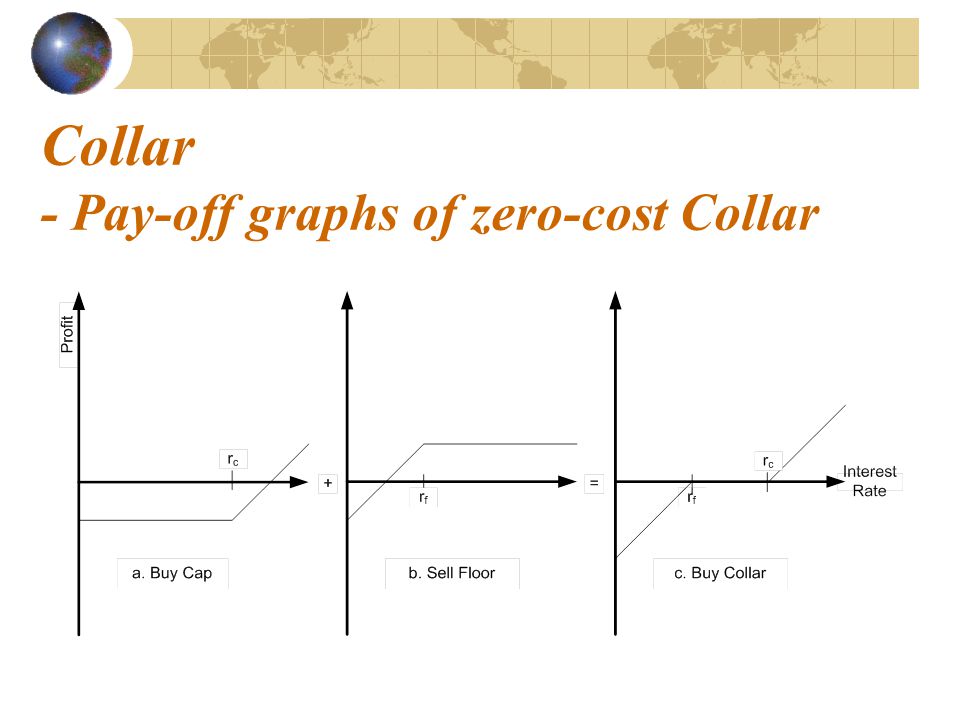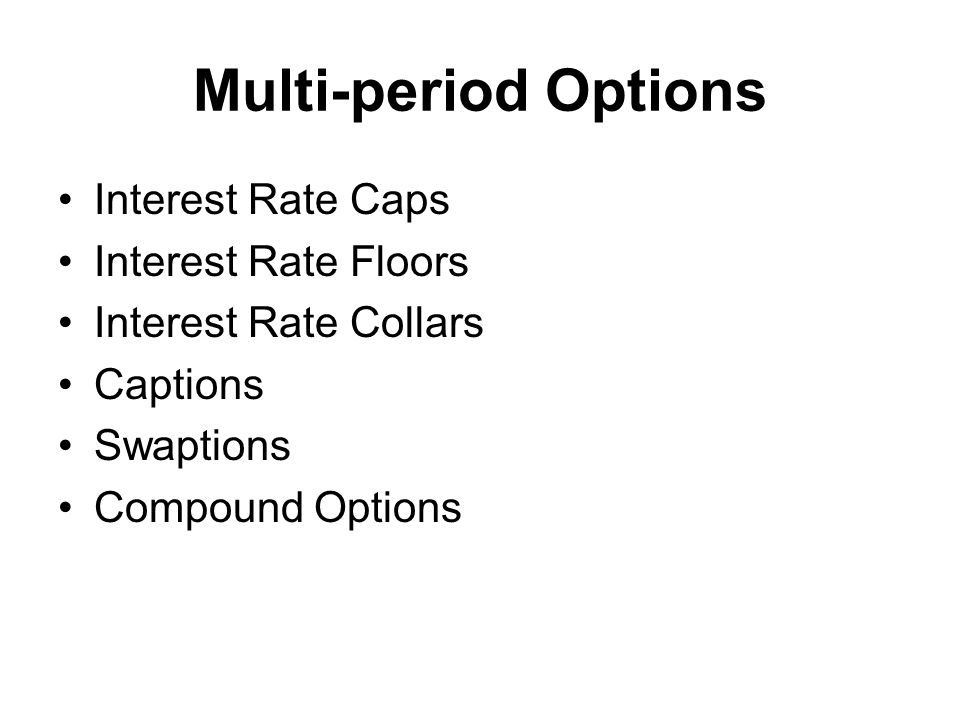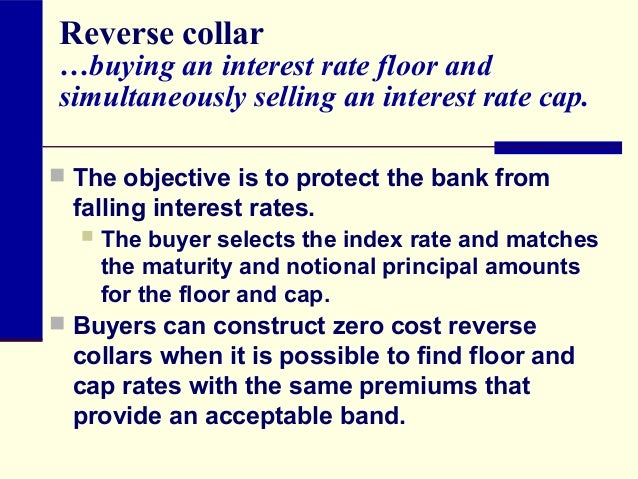Interest Rate Cap Floor And Collar

The premium for an interest rate collar also depends on the rollover frequency and how you make your premium payments.
Interest rate cap floor and collar. An interest rate collar is an option used to hedge exposure to interest rate moves. Work with associated bank to determine your preferred interest rate range marked by a cap and a floor. Therefore it is a bearish position in the bond market. Caps floors and collars 13 interest rate collars a collar is a long position in a cap and a short position in a floor.
Typically the premium of the cap is designed to exactly match that of the. Interest rate swap in hedging variable rate debt with a swap an organization agrees to pay out a fixed amount each month to a counterparty in exchange for receipt of a variable rate. Time 0 5 6 004 0 470 4 721 0 021 35 0 06004 0 04721 0 470 0 021 ir modeling a capped floater. It is a type of positive carry collar that is constructed by simultaneously purchasing and selling of out of the money calls and puts with the strike prices of which creating a band encircled by an upper and lower bound.
Imagine buying a 1 70 libor cap and selling a 1 70 floor. If the benchmark rate exceeds the cap associated bank pays you the difference for the period. Associated bank offers interest rate swaps structured with collars. Indeed its interest rate delta is negative.
This organization has purchased a 5 cap and sold a 2 floor which provides the organization with an interest rate collar of 2 to 5. A collar involves selling a covered call and simultaneously buying a protective put with the same expiration establishing a floor and a cap on interest rates. The issuer of a floating rate note might use this to cap the upside of his debt service and pay for the cap with a floor. The call and put options take on the role of caps and floors.
While the collar effectively hedges. It protects a borrower against rising rates and establishes a floor on declining rates through the purchase of an interest rate cap and the simultaneous sale of an interest rate floor. As seen from the table borrower is already reducing its premium costs to 100 000 80 000 20 000 buy selling floor and also limiting its interest costs at 5 when interest rate rises above the cap level. For example as a borrower with current market rates at 6 you would pay more for an interest rate collar with a 4 floor and a 7 cap than a collar with a 5 floor and a 8 5 cap.
Table 3 interest rate collar example. As stated before a collar establishes a defined range floor and cap of interest rates the hedger is subjected to as opposed to a single fixed swap rate.





:max_bytes(150000):strip_icc()/strategy-4086857_19201-23485cf7c4bf4dbbb95c93f267285f16.jpg)





































